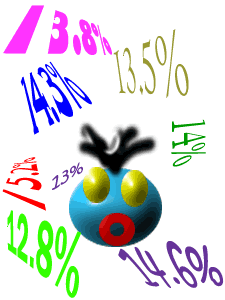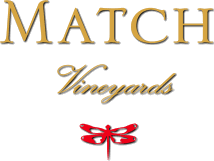 Okay, so we don’t usually treat fine wines like the “punch” bowl at a frat house. (If you do, please click here.) Wine is a serious beverage containing a serious drug. And, unlike prescriptions the pharmacy fills, the size of the “dose” can vary greatly. I feel differently after having a couple of glasses of Napa Cab at 14.6% Alcohol By Volume (ABV) than I feel after a couple of glasses of <13% Pinot Gris. That little extra percentage point or two can sneak up on you hard.
Okay, so we don’t usually treat fine wines like the “punch” bowl at a frat house. (If you do, please click here.) Wine is a serious beverage containing a serious drug. And, unlike prescriptions the pharmacy fills, the size of the “dose” can vary greatly. I feel differently after having a couple of glasses of Napa Cab at 14.6% Alcohol By Volume (ABV) than I feel after a couple of glasses of <13% Pinot Gris. That little extra percentage point or two can sneak up on you hard.
In the March 31 issue of Wine Spectator Magazine, contributing editor Matt Kramer issues what he calls Manifesto 2010. (You’ll need to be either a subscriber of Wine Spectator Online or buy the print magazine to get the full text.) Basically, Mr Kramer’s point is that wineries need to be more forthcoming — a nice way of saying be more honest — with the information they put on wine labels, especially when it comes to ABV percentages.
All those in favor, say “Aye.”
“Aye!”
Opposed?
[sound of crickets chirping]
That is the sound of the wine industry sitting on their hands. Why do some wineries fudge on label ABV percentages?
The first thing one must understand when it comes to the regulation of the wine, and in fact, the whole alcoholic beverage industry, is it is all about taxes. The Feds and the states want to collect excise taxes and all the regulations are written so that the government gets its pound of flesh. Wines lower than 14% ABV are federally taxed at a rate of $1.07 / gal. Wines over 14% are taxed at $1.57 / gal. And they do keep track. Wineries must report monthly their separate inventories of wines above and below the 14% mark. This little 50 cents per gallon difference can equate to a lot of money for a large winery and isn’t chicken feed for us little guys.
HOWEVER, for the final label approval, the federal government allows a leeway of plus or minus 1 percent on wines declared to be above 14% ABV and an even greater leeway of 1.5% on wines declared to be less than 14%. You can see that this leaves A LOT of wiggle room for a winery.
This does not mean that a winery can fudge downward in order to save money on their taxes — at least it shouldn’t. According to my reading of the regulation concerning label approval as it pertains to alcohol content (27 CFR 4.36), the winery is not allowed to fudge past the separations of tax classes (<14%, 14%-21%, 21%-24%). That is, a wine that is really 14.9% ABV can be labeled 14%, but not 13.9%, even though 13.9% is within the 1% range. A 13.9% ABV wine would be a different tax class. Still, being able to say a 14.9% wine is just 14% is potentially a profitable “lie” for a winery. That number 14 is almost magical with a minority, but very vocal minority, of wine collectors. To them, it represents the difference between classic, Old World styled wines and the, as they call them, New World fruit and alcohol bombs. The truth is a wine can be unbalanced at any alcohol level.
Some wiggle room in reported ABV is necessary. Wineries obtain Certificates of Label Approvals (COLA) and print labels often several years in advance of bottling. At Match, we print labels two vintages at a time to get a volume pricing break. Labels are printed for wines that still have months or even a couple of years to sit in the barrel. While in the barrel, wine evaporates. ABV percentage is changing and we must guesstimate what it will be at bottling. I do believe that most wineries can get much closer on their labels than that legally allowed range.
It doesn’t make much economic sense for wineries to change their back labels each year to give exact vintage details to the public. Labels are expensive to change except for vintage date and alcohol class. I do agree with Mr. Kramer that wineries should be more open. However, I think the public’s “thirst” for knowledge can be sated by using our websites better. I’m going to work on that at Match.
The government should just get rid of that 14% dividing line and I don’t just say that because Match Cabernet tends to be above 14%. Heck, charge everyone the higher of the two tax rates. That dividing line is based on winemaking from years ago. Interestingly, if a wine is below 14% ABV, you don’t actually have to state a percentage of ABV on the label. You can just call it “Table Wine”. When these regulations were written, few if any wines were over 14% ABV. Now, it’s more the norm. At least it would be if we were all being honest.
I guess the Feds agree that wineries need to clean up their act when reporting ABV percentages. According to the engrossingly named TTB Circular 2010-1 Alcohol Beverage Sampling Programs Target Advertising, Labeling, and Contents Compliance , the government is going to be concentrating this year on sampling wines off retail shelves to see if the label accurately describes the product.
Are there going to be any surprises?


